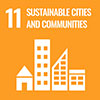Micromobility as a (new) form of transport
Micromobility is based on the sharing of mechanically simple vehicles such as bicycles and scooters, now electrically powered, through electronic devices that access information in real time (that is, through the use of smartphone apps). The electric scooter is the most recent addition to this group of vehicles for individual mobility, which also includes the bicycle. The definition of micromobility has been discussed over recent months and years and has passed through the recent regulatory changes for the Spanish case. The electric scooter offers the possibility of short journeys, mainly replacing public transport, cycling and walking, in a portable folding vehicle. The spaces in which the regulation places electric scooters are very similar to cycling spaces: cycle network lanes and traffic-calmed streets. The pressure from the increase in the flow of vehicles caused by the addition of e-scooters (which sometimes even doubles it) to cycle lanes, and the risks arising from the cohabitation of motor-powered vehicles (scooters) and non-powered ones (into which category fall the vast majority of bicycles) in the same space, reveal the need to improve the capacity and safety of cycling infrastructures and to provide safe shared roads in which speed reductions are effective. In the immediate future, it will be important to continue to question the differences and similarities between the vehicles making up the concept of micromobility and the use made of them in order to generate policies that offer fair, healthy and safe access to micromobility for everyone.
ODS



 Esther Anaya-Boig
Esther Anaya-BoigDoctorate in environmental policy from Imperial College London, has been studying sustainable mobility – particularly cycling – for almost two decades. Combines academic research with consulting on sustainable mobility policies, with an integrated vision centred around social equity and justice. Esther has created an integral assessment framework with which she applies a holistic view of mobility, generating practical tools and applied recommendations in order to help public administrations make sustainable mobility accessible to all.



